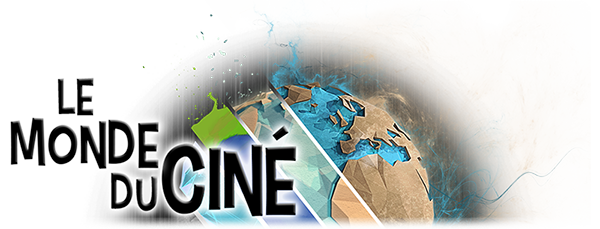Roméo et Juliette
(Critique en français : Cliquez ici)
By: William SHAKESPEARE
Composer: Charles GOUNOD
Libretto: Jules BARBIER et Michel CARRE
Director: Thomas JOLLY
Conductor: Carlo RIZZI
Artistic Collaboration: Katja KRUGER
Set design: Bruno DE LAVENERE
Costume design: Sylvette DEQUEST
Lighting design: Antoine TRAVERT
Choreography: Josépha MADOKI
Chorus master: Ching-Lien WU
Benjamin BERNHEIM or Francesco DEMURO, Jérôme BOUTILLIER, Sylvie BRUNET,
Lea DESANDRE or Marina VIOTTI, Elsa DREISIG or Pretty YENDE, Yiorgo IOANNOU,
Maciej KWASNIKOWSKI, Huw MONTAGUE RENDALL or Florian SEMPEY, Laurent NAOURI,
Thomas RICART, Jean TEITGEN and Sergio VILLEGAS GALVAIN
Orchestre et Chœurs de l’Opéra national de Paris
Maîtrise des Hauts-de-Seine / Chœurs d’enfants de l’Opéra national de Paris
until 15 july 2023
This review is based on the cast on 23 June 2023.
If we are used to seeing Roméo et Juliette at the Opéra de Paris, it is more in its ballet version by Prokofiev than in its opera version. And for good reason, the latter, composed by Charles GOUNOD, has not been performed since 1985!
The ineffable Thomas JOLLY has been entrusted with the direction of this new production. For those familiar with the artist, his touch is clearly evident: a masterful set, costumes that move between comedia del arte and modernity, and intersecting segments of light. You can feel that his precise instructions and ideas have been given to the creative teams.
As soon as the curtain rises, we are stunned by the gigantic scale of the set: Bastille has brought Garnier within its walls to an overture where the plague reigns over Verona. You can’t help but make the connection with the lovers’ grim fate or Mercutio’s unchanging line: « A Plague on both your houses ». From the staircase of the Garnier Opera House, you can’t help but think of the tableau Mascarade from the musical The Phantom of the Opera. This will also be the case in the crypt of the Capulets. No doubt a roundabout way of making opera accessible to all audiences: opera lovers and rock opera fans alike. In his Roméo et Juliette, Thomas JOLLY also plays with cameos and other easter eggs that some will have fun finding in this setting. And while the colour scheme is tight: black, white and red, each act has its own distinct identity.
The lyric singers set their voices to the music, but also to the sublime texts by Jules BARBIER and Michel CARRE. The words are far from being as hollow as those of some of today’s musicals.
There are several intense moments, most of them given by the two leads, Benjamin BERNHEIM and Elsa DREISIG. The first vocal appearances of both are truly enchanting. The lyrical flights of both are captivating. However, it is hard to believe that their love is consummated around the song of the lark in Juliet’s Chamber. While the emotional interplay is there, it is less perceptible on a physical level. It is always difficult to convey this kind of moment without sinking into excess or embarrassment. However, Elsa Dreisig later demonstrates astonishing physical strength with a controlled stunt. Incidentally, the production makes no mention in the credits of a stunt choreographer or weapons master. However, the Romeo/Mercutio/Tybalt confrontation boasts choreography worthy of the discipline.
We are left in awe of Stephano, Romeo’s page, played by Lea DESANDRE, but above all of Huw MONTAGUE RENDALL, whose emotion is just right, and perfect Mercutio, a funereal spark with the aura of a fallen angel.
The second act, Le jardin de Juliette, more commonly known as the balcony scene, is a splendid display of simplicity, underlined by the elegant melody of the harps, brought to the fore for the occasion to make the voices even more sublime.
There is one imperfection that can easily be corrected: the entrances and exits of the performers at the back of the stage, which lack discretion or even distraction.
The presence of freely interpretable characters is another game we like to play. For example, a silver raven, a bird of ill omen, swirls around Juliet during the ball.
To add a touch of modernity to the work, there is some wild choreography at the Capulets’ ball. But above all, in the fourth act, there is a scene that will leave you in awe. It’s a choreography with a bewitching ectoplasmic allure: waacking, an African-inspired dance covered by a certain Madonna…
Roméo et Juliette has an undeniable power of attraction in this adaptation that will appeal to the curious, experts and fans of all ages.
A return to Gounod in majesty!
The story:
How many composers have been inspired by the two lovers from Verona depicted by Shakespeare? From Vincenzo Bellini and Hector Berlioz to Leonard Bernstein, the list is long. If Charles Gounod’s Roméo et Juliette, first performed during the Universal Exhibition of 1867, enjoyed immediate popularity it is doubtless because this is the version that translates the tumultuous lives of the celebrated lovers with the greatest finesse. Four love duets, a fiery waltz and luminous, lyrical music: the entire score seems to tremble with desire and freshness. Who better than Thomas Jolly, one of the most inventive directors of his generation, reputed for his audacious re‑readings of Shakespeare, to celebrate this hymn to youth? Following his Eliogabalo by Cavalli in 2016, he signs his second collaboration with the Paris Opera.
OFFICIAL WEBSITE
BOX OFFICE
Aurélien.













Comments